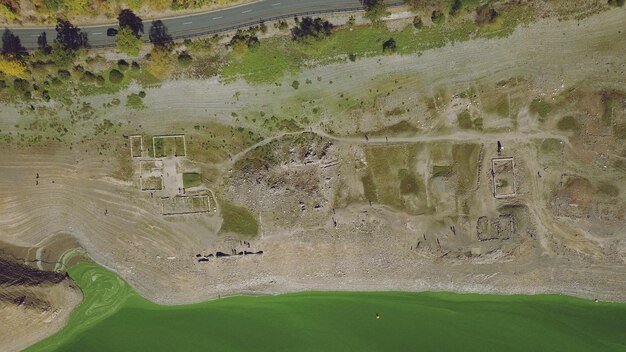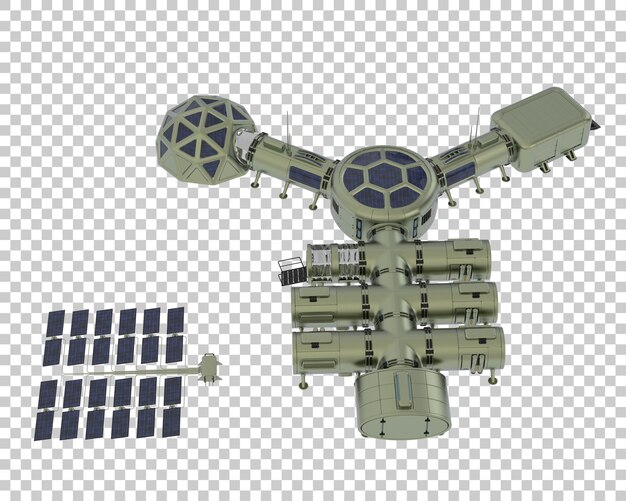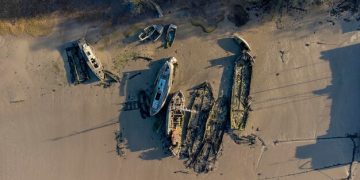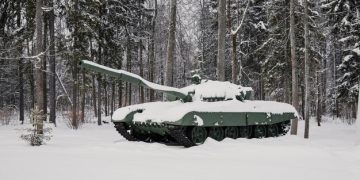US Military’s Climate Change Preparedness: Security Threats

The US military is proactively integrating climate change considerations into its strategic planning and operational readiness, recognizing its profound impact on future global security landscapes and the diverse threats posed by environmental shifts.
The evolving global landscape presents an undeniable truth: climate change is not merely an environmental concern but a significant national security challenge. For the United States military, understanding how the US military is preparing for climate change-related security threats has become paramount. This involves a comprehensive re-evaluation of strategies, infrastructure, and operational capacities to counter the multifaceted ramifications of a warming planet on global stability and direct threats to U.S. interests.
Defining the New Threat Landscape
The uniformed services are acutely aware that climate change acts as a threat multiplier, exacerbating existing vulnerabilities and creating new ones. From rising sea levels threatening coastal bases to extreme weather events disrupting operations, the manifestations are varied and complex. Understanding these threats is the first vital step in developing robust and adaptive defense strategies.
Droughts, desertification, and water scarcity contribute to resource competition, which can escalate into conflict. Melting ice caps open new contested maritime routes, creating geopolitical flashpoints. Moreover, climate-induced migration waves can destabilize regions, leading to humanitarian crises that often require military intervention or support. The Department of Defense (DoD) has consistently highlighted these concerns in its strategic documents.
Geopolitical Instability Amplified by Climate Stress
Climate change does not create conflicts out of thin air, but it indisputably intensifies underlying tensions. Regions already prone to instability become more volatile when resource scarcity or natural disasters displace populations and strain governance. The military’s role often shifts from traditional combat to humanitarian assistance and disaster relief (HADR).
- Resource Competition: Diminishing access to water and arable land fuels rivalries among populations and nations.
- Mass Migration: Climate refugees place immense pressure on host nations, leading to social and political unrest.
- Fragile States: Countries with weak governance structures are particularly susceptible to climate shocks, increasing the risk of state failure.
This evolving threat matrix demands a flexible and comprehensive military response, one that integrates environmental foresight into traditional security planning. It’s no longer just about defending borders but about anticipating and mitigating the cascading effects of global environmental shifts.
Direct Operational Impacts on Military Capabilities
Beyond geopolitical shifts, climate change directly impacts military infrastructure and operational readiness. Coastal naval bases, crucial for projecting power, face inundation from rising sea levels and increased storm surges. Airfields in arid regions contend with extreme heat that affects aircraft performance and personnel safety.
Training schedules are disrupted by increasingly frequent and severe weather. Equipment, designed for specific environmental parameters, may degrade faster or require more maintenance in extreme conditions. The military’s ability to respond quickly and effectively depends on reliable infrastructure and optimal operating conditions, both of which are under siege from climate change.
In essence, the military must prepare not only for the conflicts that climate change might spawn but also for the direct challenges it poses to its ability to function. This involves significant investment in resilient infrastructure, adaptation of training protocols, and research into climate-agnostic technologies. It’s a multi-faceted challenge requiring innovation and long-term strategic vision.
The convergence of these factors paints a clear picture: climate change is a core security issue. The US military is therefore working to integrate climate risk assessments into every layer of its planning, from acquisition and logistics to training and deployment. This proactive stance acknowledges that ignoring climate impacts would be a dereliction of duty in safeguarding national interests and global stability.
Strategic Integration and Policy Shifts
Recognizing the gravity of climate-related threats, the US military has begun to embed climate change considerations deeply within its strategic frameworks and policy directives. This isn’t a peripheral concern but a fundamental aspect of modern defense planning. The shift reflects an understanding that climate resilience is operational readiness.
Department of Defense instructions and directives now explicitly mandate the assessment and integration of climate risks into operations, planning, and resource allocation. This top-down guidance ensures that every branch of the military, from the Army to the Space Force, considers how a changing climate will affect their missions. It’s a deliberate effort to move from awareness to actionable policy.
DoD Directives and Climate Risk Management
The DoD has issued several unclassified reports and directives detailing its approach to climate change. These documents underscore the military’s role in understanding, assessing, and responding to the security implications of a changing climate. Managing these risks involves a continuous cycle of identification, assessment, mitigation, and adaptation.
- Risk Assessments: Regular evaluations of climate vulnerabilities across installations, operations, and supply chains.
- Strategic Planning: Incorporating climate projections into long-range defense strategies and national security documents.
- Budget Allocation: Prioritizing investments in climate-resilient infrastructure and sustainable technologies.
This institutionalization of climate awareness ensures that it becomes a permanent feature of military readiness, rather than a fleeting priority. It’s a recognition that future conflicts and crises will be inevitably intertwined with environmental factors.
Interagency Collaboration and International Partnerships
Climate change is a global phenomenon, and its security implications transcend national borders. The US military understands that effective preparation requires robust interagency collaboration within the US government and strong partnerships with international allies. This collaborative approach enhances information sharing, coordinated responses, and collective resilience.
Within the US, the DoD works closely with agencies like the Department of Homeland Security, NOAA, and FEMA to integrate climate data into military planning and disaster response. Internationally, the US military engages with NATO, bilateral partners, and multilateral organizations to share best practices, conduct joint exercises, and develop common frameworks for addressing climate-related security challenges.
These partnerships are critical for understanding diverse regional impacts, building mutual capacity, and ensuring a synchronized global response to humanitarian crises or conflicts exacerbated by climate factors. Diplomacy and defense are increasingly intertwined in addressing environmental security. This integrated approach underlines the complexity and urgency of the task at hand, highlighting the military’s commitment to a holistic solution.
Investing in Resilient Infrastructure and Technologies
A significant aspect of the US military’s climate preparedness involves substantial investment in making its vast global infrastructure more resilient to environmental shocks, as well as developing technologies that enhance operational effectiveness in a changing climate. This proactive approach aims to safeguard critical assets and ensure continuous mission capability, even in adverse conditions.
From fortifying coastal bases against rising sea levels to upgrading power grids for enhanced energy security and efficiency, the scale of these investments is immense. The goal is to create a defense posture that can withstand the increasing frequency and intensity of extreme weather events, while simultaneously embracing sustainable practices to mitigate the military’s own environmental footprint.
Fortifying Bases Against Environmental Extremes
Many critical military installations are located in low-lying coastal areas or regions prone to extreme weather, making them particularly vulnerable to climate impacts. Efforts are underway to implement diverse engineering solutions to protect these assets.
- Coastal Protection: Construction of seawalls, elevation of critical infrastructure, and restoration of natural barriers like wetlands.
- Water Management: Development of advanced drainage systems and water conservation technologies to manage both floods and droughts.
- Extreme Heat Mitigation: Implementation of cooling technologies for facilities and development of heat-resilient materials for infrastructure.
Naval Station Norfolk, one of the largest naval bases in the world, is a prime example of an installation undergoing significant climate adaptation. Projects include raising piers, improving stormwater management, and relocating critical assets to higher ground. These efforts are not merely reactive but are integrated into long-term master facility plans, demonstrating a commitment to sustained resilience.
Beyond traditional infrastructure, military housing and support facilities are also being assessed for climate vulnerability, aiming to protect service members and their families. This holistic approach ensures that the entire military ecosystem is considered in the climate adaptation strategy.
Energy Security and Renewable Integration
Reducing reliance on fossil fuels not only decreases the military’s carbon footprint but also enhances energy security and operational flexibility. Decentralized renewable energy systems make installations less vulnerable to grid failures caused by extreme weather or cyberattacks.
The DoD is actively pursuing the integration of solar, wind, and geothermal energy sources at its bases worldwide. Microgrids are being developed to allow installations to operate independently from the main power grid during emergencies. These innovations provide both environmental benefits and strategic advantages.
Furthermore, research and development are focused on creating more energy-efficient equipment, from vehicles to individual soldier systems, reducing logistical burdens and fuel demands in the field. This quest for energy independence and efficiency underscores the military’s understanding that sustainable energy practices are integral to modern warfighting capabilities and climate resilience.

Adapting Training and Doctrine
The evolving nature of climate-related security threats necessitates significant adjustments to military training and doctrine. It’s no longer sufficient to train solely for conventional warfare; service members must be prepared for a broader spectrum of operations, often in challenging and dynamic environmental conditions. This adaptation includes revising training curricula, conducting new types of exercises, and developing specialized skills.
From humanitarian assistance and disaster relief (HADR) operations to navigating disrupted supply chains in extreme weather, the spectrum of potential scenarios is expanding. Military planners are thus integrating climate projections into training scenarios, ensuring that personnel are adequately prepared to operate in environments increasingly affected by climate change.
Refining Humanitarian Assistance and Disaster Relief (HADR) Readiness
Climate change is escalating the frequency and intensity of natural disasters globally. Consequently, the military’s role in HADR operations has become more prominent. Training now emphasizes rapid deployment, logistical challenges in damaged environments, and coordination with civilian agencies and international partners.
- Interoperability: Joint training exercises with civilian disaster response teams and agencies like USAID.
- Logistics in Adversity: Practicing delivery of aid and personnel in areas with compromised infrastructure due to floods, fires, or storms.
- Medical Preparedness: Training for public health emergencies that often follow environmental disasters, like disease outbreaks.
These specialized HADR training programs include simulation exercises that mirror real-world climate impacts, such as responding to massive floods or widespread wildfires. The focus is on developing agile and adaptable units that can quickly transition from combat readiness to disaster response, reflecting the hybrid nature of future military engagements.
Operating in Arctic Conditions and Other New Frontiers
As Arctic ice melts, new sea lanes open, and access to natural resources becomes more feasible, the region emerges as a new strategic frontier. The US military is increasing its presence and operational capabilities in the Arctic, demanding specialized training for extreme cold-weather operations. This includes mastering navigation in icy waters, enduring prolonged exposure to sub-zero temperatures, and understanding the environmental fragility of the region.
Similarly, training for extreme heat, desertification, and prolonged drought conditions is also being enhanced. These diverse environmental challenges require troops to adapt quickly, maintain equipment in harsh elements, and understand local populations’ vulnerabilities linked to resource scarcity. The development of climate-specific field manuals and operational guidelines is also underway to ensure a standardized approach to these emerging challenges.
The emphasis on adapting training and doctrine underscores the military’s proactive stance. It’s about equipping service members not just with traditional warfighting skills but also with the environmental literacy and adaptability necessary to operate effectively in a world profoundly shaped by climate change.
Research and Development for Future Resilience
At the core of the US military’s long-term climate preparedness is a robust commitment to research and development (R&D). This continuous innovation ensures that defense capabilities evolve alongside environmental realities. Investing in cutting-edge science and technology is crucial for anticipating future challenges, developing adaptive solutions, and maintaining a technological edge in a climate-impacted world.
R&D efforts span a wide array of areas, from advanced climate modeling and predictive analytics to the development of resilient materials, energy-efficient platforms, and bio-inspired technologies. The goal is not just to mitigate risks but to leverage technological advancements to create new opportunities for enhanced security and sustainability.
Climate Modeling and Predictive Analytics
Accurate climate data and predictive models are indispensable tools for military planners. Understanding future climate scenarios—such as sea-level rise projections, extreme weather frequency, and regional resource vulnerabilities—allows for proactive strategic planning and infrastructure development. The military collaborates with leading scientific institutions to refine these models.
- High-Resolution Forecasting: Developing more precise weather and climate forecasts for operational planning.
- Impact Assessment Tools: Creating models to predict the specific effects of climate change on military bases and operational areas.
- Scenario Planning: Using climate projections to simulate future security environments and test potential responses.
These analytical tools help in making informed decisions about land use, base construction, equipment design, and deployment strategies. They transform climate uncertainty into calculated risk, enabling the military to adapt effectively.
Advanced Materials and Energy Innovations
Developing new materials that can withstand extreme temperatures, corrosive environments, or prolonged exposure to UV radiation is vital for equipment longevity and troop protection. Research focuses on lightweight, durable composites, self-healing materials, and coatings that enhance resilience.
In parallel, significant R&D is directed towards energy innovations. This includes advanced battery technologies for extended mission durations, modular renewable energy sources for forward operating bases, and more efficient jet fuels derived from sustainable sources. The aim is to reduce logistical burdens, enhance operational reach, and create a more environmentally sustainable military presence.
Breakthroughs in these areas not only support climate adaptation but also offer broader strategic advantages, enhancing overall military capabilities. The synergy between climate resilience and technological advancement is a cornerstone of future defense strategy, ensuring that the US military remains effective and adaptable in a world grappling with environmental shifts.
Global Partnerships for Climate Security
Addressing climate change and its security implications is a challenge that transcends national borders. The US military recognizes the critical importance of fostering global partnerships to develop collective resilience, share expertise, and coordinate responses to climate-related crises. This collaborative approach enhances international stability and strengthens diplomatic ties.
Through bilateral and multilateral engagements, the US military works with allies and partners to integrate climate security into joint exercises, intelligence sharing, and capacity-building initiatives. These collaborations are essential for building a unified front against a common threat that impacts all nations, albeit with varying degrees of severity.
NATO and Allied Climate Integration
NATO, the cornerstone of transatlantic security, has increasingly focused on climate change as a critical security issue. The US military actively participates in NATO’s climate and security agenda, contributing to joint assessments, policy development, and sharing best practices.
Joint training exercises often incorporate scenarios related to climate impacts, such as severe flooding or mass displacement, enhancing interoperability among allied forces in humanitarian assistance and disaster relief operations. This collective approach strengthens the alliance’s ability to respond effectively to a wide range of climate-induced challenges affecting its members and beyond.
The emphasis on climate security within NATO reinforces the idea that environmental stability is directly linked to regional and global security, promoting a more holistic approach to collective defense.
Capacity Building in Vulnerable Regions
Many of the regions most vulnerable to climate change impacts are also strategically important. The US military engages in capacity-building efforts with partner nations in these areas, helping them develop their own climate adaptation strategies and disaster response capabilities.
This includes training local militaries and security forces in climate risk assessment, emergency management, and sustainable practices. Providing expertise and resources helps strengthen local resilience, reduce the likelihood of instability, and lessen the need for direct intervention during crises. These partnerships are a vital component of preventive diplomacy through defense engagement.

By investing in global partnerships, the US military not only enhances its own understanding and capabilities in climate security but also contributes to a more stable and resilient international environment. This collaborative spirit underscores the interconnectedness of climate, security, and global cooperation. It’s part of a broader strategy to lead by example and foster collective action against shared environmental threats.
Challenges and Future Outlook
While significant strides have been made in preparing the US military for climate change-related security threats, substantial challenges remain. The sheer scale and complexity of climate impacts demand continuous adaptation, agile strategy adjustments, and sustained investment. The future outlook points to an ongoing evolution of military roles and responsibilities in a world increasingly shaped by environmental factors.
Navigating these challenges requires foresight, innovation, and unwavering political will. The military’s proactive stance is critical for safeguarding national interests and contributing to global stability in the face of unprecedented environmental shifts. The path ahead involves both overcoming obstacles and seizing opportunities for strategic advantage.
Budgetary Constraints and Interoperability Hurdles
One of the primary challenges is securing consistent and adequate funding for climate adaptation and mitigation efforts. Military budgets are subject to competing priorities, and climate-related investments must contend with other critical defense needs. Ensuring long-term, predictable funding streams is essential for implementing large-scale infrastructure projects and sustained R&D.
Furthermore, achieving full interoperability—both within different branches of the US military and with international partners—in climate-related operations can be complex. Different equipment, communication protocols, and strategic doctrines require careful synchronization, especially during rapid-response HADR missions or complex environmental security operations. Overcoming these hurdles requires continuous training, joint exercises, and technological harmonization.
Anticipating Unforeseen Consequences and Accelerating Pace
Climate change is already manifesting with greater intensity and speed than many models initially predicted. Rapidly melting glaciers, more extreme heatwaves, and sudden ecosystem collapses can lead to unforeseen security consequences that demand quick and innovative military responses. The challenge lies in anticipating these “black swan” events and maintaining sufficient flexibility to adapt when the unexpected occurs.
The accelerating pace of climate change means that static planning is insufficient. The military must embed dynamic assessment and adaptive management into its core operations, allowing for real-time adjustments based on new scientific data and evolving environmental realities. This nimble approach is paramount for maintaining readiness and effectiveness in an unpredictable future.
The future for the US military will undoubtedly feature climate change as a persistent and growing factor in its strategic calculations. From protecting its own assets to responding to global crises exacerbated by environmental degradation, the military’s role will continue to expand and diversify. The ongoing commitment to integrating climate readiness into every facet of defense underscores a critical understanding: a secure future depends on an adaptable and resilient military, capable of operating in a world defined by the impacts of a changing climate.
| Key Aspect | Brief Description |
|---|---|
| 🌍 Threat Multiplier | Climate change exacerbates existing geopolitical tensions and creates new security challenges. |
| ⚙️ Infrastructure Resilience | Significant investments are being made to fortify military bases against environmental extremes. |
| 훈련 Training Adaptations | Military training is evolving to include HADR and operations in climate-impacted environments. |
| 🔬 R&D Focus | Ongoing research and development into climate modeling, resilient materials, and energy innovations. |
Frequently Asked Questions About Military Climate Preparedness
The US military views climate change as a significant national security threat because it acts as a “threat multiplier.” It exacerbates existing instabilities, creates new operational challenges, and can lead to increased demand for humanitarian assistance, all of which impact military readiness and strategic interests globally.
Climate change impacts military bases through rising sea levels, increased frequency of extreme weather events like floods and storms, and extreme temperatures. These factors threaten infrastructure, disrupt training, and affect operational capabilities, necessitating significant investments in resilience and adaptation measures across installations.
Military training is adapting by increasing focus on humanitarian assistance and disaster relief (HADR) operations, which are becoming more frequent due to climate-driven events. Training also includes operating in new environments like the Arctic and preparing for extreme conditions such as prolonged heat or drought in various regions.
Yes, the US military is significantly investing in renewable energy and energy efficiency. This is driven by both environmental concerns and the strategic goal of enhancing energy security and operational flexibility. Decentralized renewable systems and microgrids at bases reduce reliance on vulnerable traditional power grids.
The US military actively collaborates with international allies and partners, including through NATO, to integrate climate security into joint exercises and intelligence sharing. This global partnership focuses on building collective resilience, sharing best practices, and coordinating responses to climate-related crises, strengthening international stability.
Conclusion
The imperative for the US military to prepare for climate change-related security threats is clear and undeniable. From altering strategic doctrines and fortifying critical infrastructure to adapting training and fostering global partnerships, the defense establishment is undertaking a broad transformation. This proactive approach acknowledges that a stable global environment is intrinsically linked to national security. The challenges are formidable, but the commitment to resilience, innovation, and collaboration positions the US military to navigate the complexities of a changing climate, ensuring its continued effectiveness in protecting national interests and contributing to a more stable world.





